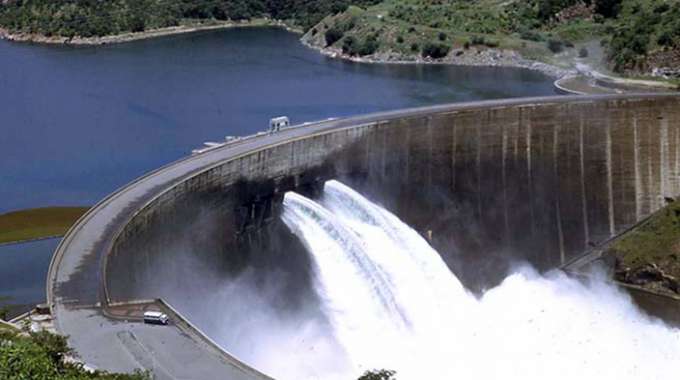Kariba Dam and its catchment have continued to record a significant rise in water levels.
In a statement Issued by Zambezi River Authority Public Relations Officer Fitzgerald Muchindu, Authority’s Chief Executive Officer Engineer Munyaradzi Munodawafa has attributed the rise in water levels to the increased inflows into Lake Kariba from the Kariba upper and lower catchment.
Engineer Munodawafa observed that from the last update provided on 3rd March 2021, the lake levels increased by a total of 1.21 meters, increasing from the level of 480.76m recorded and with an associated live storage of 24.30 BCM, to a lake level of 481.97 meters with a live storage of 30.30 BCM recorded on 7th April 2021.
He said this represents a 25 percent increase in live storage over a period of 37 days.
The ZRA chief said the lake level recorded on 7th April 2021 of 481.97 meters has placed the lake level at 6.47 meters above the Minimum Operating Level (MOL) of 475.50m.
He said this places the lake water levels at 6.53 meters below the full supply level of 488.50 meters.
Engineer Munodawafa recalled that Last year during the same period, the Lake level was lower at 478.25m with 12.40 BCM of usable water or 19.17 percent live storage.
He said that had placed the lake water levels at only 2.7m above the Minimum Operating Level of 475.5m and 10.25m below the full supply level of 488.50m.
Meanwhile, the ZRA boss disclosed that the Authority has maintained the 30 BCM of water allocated for power generation operations at Kariba for the year 2021, shared equally between the two power stations.
He said a review of the hydrological outlook is scheduled to be undertaken by the end of the second quarter of 2021 that would inform on any adjustments to the current water allocation.
“In line with the seasonal forecast released by the Twenty-Fourth Annual Southern Africa Regional Climate Outlook Forum (SARCOF-24) in August 2020, the bulk of the SADC region in general and the Kariba Catchment in particular, has received normal to above-normal rainfall during the first quarter of 2021. Accordingly, the Zambezi River flows as monitored at the Authority’s Key River Flows Gauging Stations are as follows:
“Zambezi River Flows as Monitored at Chavuma Gauging Station.
“During the 3rd of March 2021 update on water levels, the flows at Chavuma were notably declining.
“The good news, however, is that as per hydrological cycle for the station, the flows have increased, thus closing the period under review at Three thousand, three hundred and ninety-six cubic meters per second (3,396m3/s). This translates into an increase of 1,104m3/s from the 3rd of March 2021 recorded a flow of 2,292m3/s.
“On the same date last year, the flows were higher at 5,803m3/s.
“The peak in flows during this time of the year is historical and is a normal hydrological cycle for the gauging station whereby two peaks are recorded twice in any given season; starting with one during the first quarter and the second in the second quarter of the year,” he said.
The Zambezi River flows recorded at Victoria Falls gauging station are now receding following the first peak in flows of early March 2021. On April 7, 2021, the recorded flow at Victoria Falls flows was 3,231 m3/s which is lower than the 3,890m3/s flow recorded on the same date last year. However, as per historical hydrological cycle, the station is expected to record a second peak in flows in May 2021.
“In line with our mandate, the Authority remains committed to its work of prudently managing the Kariba Dam and will continue to monitor the hydrological outlook of the Kariba Catchment and make necessary adjustments in the reservoir operations to ensure continued availability of water for power generation operations at Kariba Dam.”
“The Zambezi River Authority (the Authority) is a Bi-National organization mandated to contribute to the economic, industrial and social development of the Republics of Zambia and Zimbabwe by obtaining the greatest possible benefits from the natural advantages offered by the waters of the Zambezi River (between Zambia and Zimbabwe) through the most economical and effective means of providing water for generation of electricity and for other purposes which the Contracting States may decide upon.”Engineer Munodawafa said.













